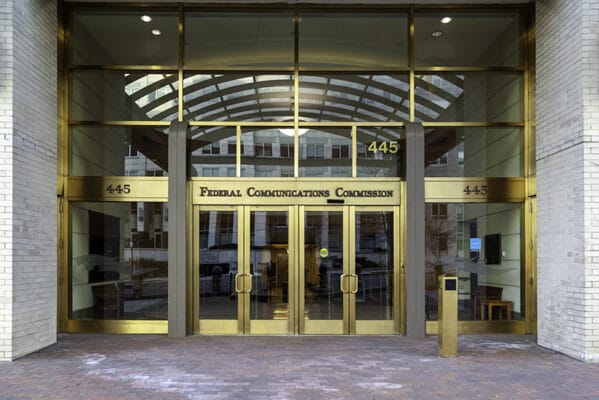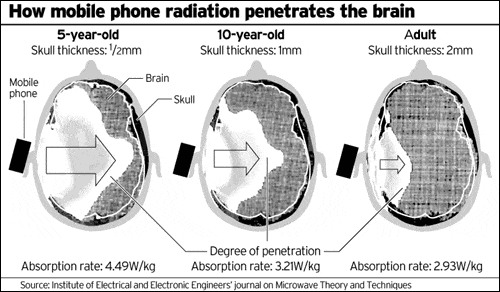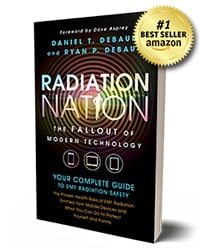Your cart is currently empty!

FCC Loses Landmark Court Case Showing 5G and Wireless Radiation Standards Fail to Adequately Protect the Public, Children from EMF Radiation – Aug 2021
Last Updated on October 3, 2023

For years, scientists, researchers, and even the public have questioned the safety and validity of the federal limits set by the Federal Communications Commission (FCC) for EMF radiation exposure.
And for years, federal regulators have refuted these claims, maintaining regulatory standards from the 20th century… more than 25 years ago.
Our book, Radiation Nation, published back in 2017, discusses these inadequate safety standards. From our extensive research that eventually led to the founding of DefenderShield back in 2011, we were already aware that the 1996 FCC standards did not address the full scope of radiation dangers coming from our electronic devices. It wasn’t sufficient back in 1996—nor 2011—and with all the technological advances since then, we have now reached far beyond the appropriate point of revision.
However, thanks to a recent U.S. court ruling, the time may have finally come for the FCC to update their guidelines to reflect the accumulated evidence showing EMF health effects—specifically with children— as well as our updated 5G technology.
CHD vs. FCC U.S. Court Case Overview
The CHD, who filed a joint brief with the Environmental Health Trust (EHT), sued the FCC after its 2019 decision “not to review or update their 1996 health and safety guidelines for wireless-based technologies, including 5G.”
On August 13, 2021, the U.S. Court of Appeals for the DC Circuit ruled against the FCC and in favor of Children’s Health Defense (CHD) in a two-to-one panel decision, calling for the FCC to reevaluate its wireless radiation exposure standards.
The Children’s Health Defense
The CHD is a non-profit organization, led by Robert F. Kennedy. Its mission is to “end childhood health epidemics by working aggressively to eliminate harmful exposure, hold those accountable, and to establish safeguards so this never happens again.”
As champions for the health and safety of children, the CHD went after the FCC because of the risk EMF exposure poses to children specifically.

The Argument
The CHD filed a lawsuit, called a Petition for Review, that argues the FCC’s refusal to update guidelines as arbitrary, capricious, not evidence-based, an abuse of discretion and in violation of the Administrative Procedures Act (APA).
To support their case, the CHD and the EHT provided over 11,000 pages of evidence contesting the FCC’s conclusions. The evidence showed harmful effects on the body and the environment from pulsed and modulated RF radiation at non-thermal levels.
In addition, nine individual petitioners joined CHD’s lawsuit, including scientists, health experts, physicians, and a mother whose son died of an alleged cell-phone-related brain tumor.
The Decision
The court’s judgment states:
“The case be remanded to the [FCC] to provide a reasoned explanation for its determination that its guidelines adequately protect against harmful effects of exposure to radiofrequency radiation…”
By not presenting any evidence or response to show the efficacy of their regulatory limits, this rendered the FCC’s decision to not update the regulatory limits as a violation of the Administrative Procedures Act.

Other Statements from the Court
Additionally, the court ruled the FCC neglected non-cancer evidence in determining their standards, and thus put the health and safety of the public at risk.
Besides the public, the court stated that:
“…the FCC completely failed to acknowledge, let alone respond to, comments concerning the impact of RF radiation on the environment…The record contains substantive evidence of potential environmental harms.”
They also stated that the Food and Drug Administration’s (FDA) analysis of RF safety was not evidence-based. Since the FCC used the FDA’s analysis for their decision-making process, it failed to meet the required analysis level for government agencies.
What Happens Now?
As CHD Chairman and attorney on the case Robert F Kennedy, Jr. said: “The court’s decision exposes the FCC and FDA as captive agencies that have abandoned their duty to protect public health in favor of a single-minded crusade to increase telecom industry profits.”
Scott McCollough, the CHD’s lead attorney for the case, was hopeful that the FCC will create better standards in the future.
“The FCC will have to re-open the proceeding and for the first time meaningfully and responsibly confront the vast amount of scientific and medical evidence showing that current guidelines do not adequately protect health and the environment.”
This is considered a historic win for the health community because the FCC will now have to re-evaluate their regulations, which is especially relevant now because of the worldwide rollout of 5G.
5G is the newest iteration of wireless connectivity—technology that was non-existent when the FCC’s standards were created. (To take an in-depth dive into 5G and how to protect from its exposure, check out this blog).

The FCC SAR Standards for Phones
The National Environmental Policy Act of 1969 gave the FCC the responsibility “to evaluate the effect of emissions from FCC-regulated transmitters on the quality of the human environment.”
In 1996, the FCC released the health standards for exposure to wireless radiation that are currently still in place. Using Specific Absorption Rate (SAR), the recommended exposure is a maximum of 0.08 W/kg for whole-body exposure and 1.6 W/kg for localized spatial peak—exposure for a specific body part.
In 2013, the FCC opened an inquiry evaluating proposed changes to their standards for radiation exposure levels and the reassessment of exposure limits and policies. That inquiry was closed in 2019, when the FCC “determined” their standards were still appropriate for the current technological environment.
They ignored input from over 50 scientists, hundreds—if not thousands—of studies, and testimonials from hundreds of people who suffer from Electromagnetic Hypersensitivity (EHS) and radiation illness.
The FCC claimed to have found “no scientific evidence to establish a causal link.” The decision to not update the standards is what prompted the CHD to sue.
By claiming that the current standards are still appropriate for current technology use, people will blindly follow their lead and use the FCC’s decision to justify potentially harmful technology use. We explain this more on our “Top 10 EMF Radiation Myths Debunked” page.
Why Are The FCC Standards Inadequate?
1) The FCC only took into consideration measurements of thermal effects from EMFs.

While it’s true that radiation can have thermal effects (RF energy can heat tissue rapidly), this only happens at higher power levels. Research has found that EMF radiation at levels too low to have heat emissions still present many biological effects. These are not considered in the FCC’s standards, even though they are arguably more dangerous.
2) The standards were developed in the 1990s technological environment.

They have not been updated to reflect the most recent technology, which uses different frequencies, different transmissions, and infinitely more sources. Since 1996 we have seen a radical digital revolution, with cell phone use growing from 15% to 96% of the population today. The standards do not represent the digital world we live in now, and were instead created to protect from the ancient phones and computers available in the 20th century.
3) The measurement standards did not take into account chronic direct contact with the body.

The standards measured RF from “transmitting antennas such as those used for cellular radio,” and tested sources 2 or more inches away from the body. Additionally, when phones are tested to make sure they are below SAR standards, the phone is not directly contacting the body. While only a few inches might not seem to make much of a difference, talking with a cell phone directly against your head or using a laptop with it on your lap will produce exponentially more direct and intense radiation. This is how most people use their technology, and the FCC standards were not tested with this in mind.
4) They don’t consider all types of people.
To create their standard, the FCC created a 200-pound, 6-foot male testing dummy, which represents approximately 3% of the population. EMF radiation is much more harmful to developing children, pregnant women, those with illnesses or compromised immune systems, and the senior population. While an EMF signal can travel only 2 inches into a grown adult’s head, it can go almost completely through a child’s smaller and more conductive head.

It may take a while for the FCC to conduct their review and create updated guidelines—if they don’t appeal the decision first.
Even so, acknowledgement from the U.S. Court of Appeals—that wireless radiation harms exist and the current FCC standards are not good enough—should be enough to legitimize an issue that regulators, governments, and many in the public community have been downplaying for many, many years. It will hopefully pave the way for meaningful change in the matter of the digital health and safety of all generations.
Related Posts
None found



























